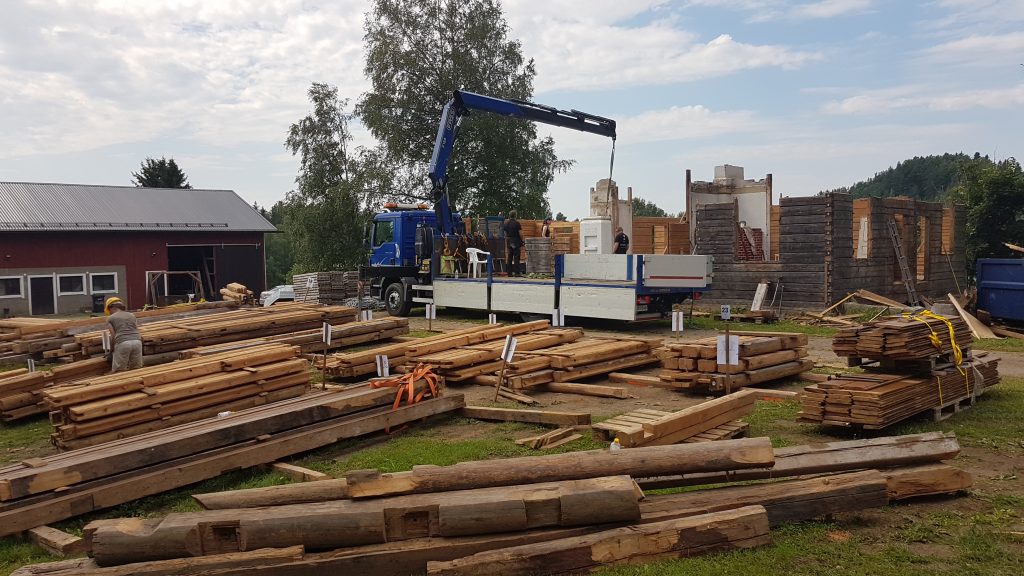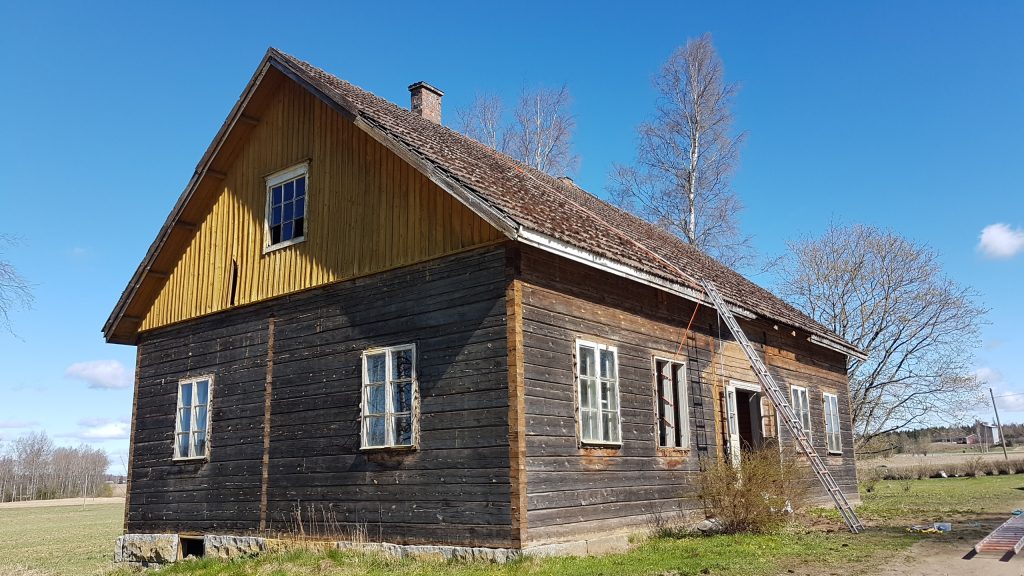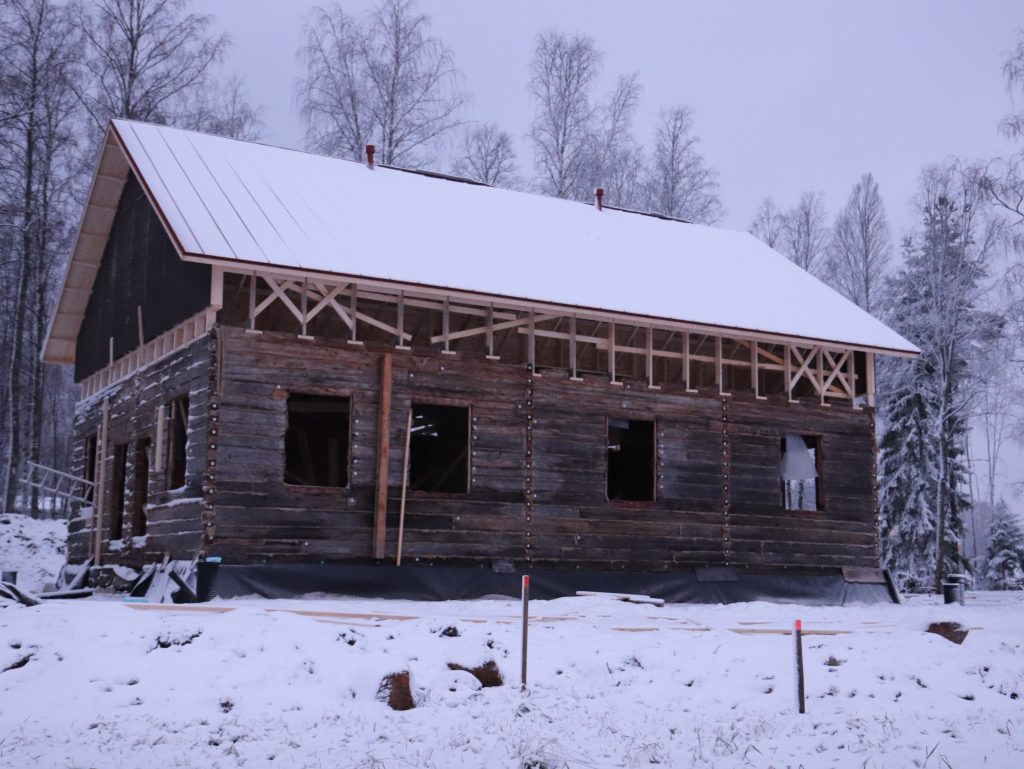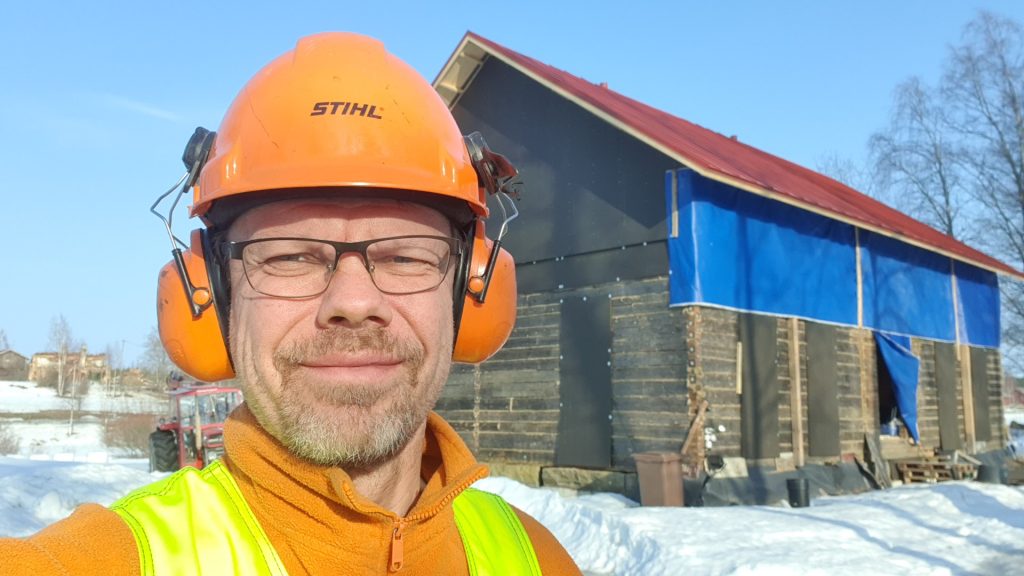Moving a log house from Häme to Kuopio
Finland is host to many examples of how log buildings have been dismantled and re-erected in new locations. At their best, the logs have been re-used over and over again for centuries. Timo Ovaskainen found a log home for himself in Häme and moved it to Kuopio.
Text: Inkariina Sipiläinen
Photographs: Timo Ovaskainen
Read the article in Finnish: Hirsitalo muutti Hämeestä Kuopioon

Timo Ovaskainen and his spouse are both strong proponents of sustainable development, so cherishing the old and re-using historic materials fit their worldview.
The Ovaskainens wanted to build a log house in Kuopio, but they found a beautiful one in Häme quite by chance. Last inhabited in the 1980s, the building had no running water and was located on a gentle hill in an open field.
Built on a base of stone blocks, the house was well preserved thanks in part to the drainage friendly shape of the plot and the excellent gravel soil. The wind hit the somewhat low base floor at just the right angle, so the wood was still in good condition.
The family decided to move the log house to Kuopio, relocating it to the edge of a scenic field. The stone block foundation, floor-boards, windows, doors and ceiling panels from the house were reused, in addition to the log frame.
In the community, the old building had been nicknamed the pharmacist’s house because it was built by pharmacist V.A. Timonen in the 1920s. The logs he used had probably already been recycled at least once. Ovaskainen says that the oldest map covering the property dates back to 1706, although the property probably already had buildings in the 17th century.
– We aim to have some of the tree rings dated sometime in the future because we want to know how old the oldest logs in our house are, Ovaskainen says.


Environmental awareness and a recycling spirit
First, we used a high-performance vacuum to remove the insulation – but kept an eye out for any exciting historical finds. Indeed, a number of treasures were uncovered when the building was dismantled, including coins from the 1830s and 1860s. The oldest document found was in the subfloor and is from the 1810s. The insulation on the upper floor had bullets and old pharmacy bottles in it, while there were tobacco boxes from the 1940s in the floors. Each of the objects left behind in the house tell their own story about the place and its events.
The dismantling process began on May 1, 2020. Once dismantled, the building and its wood components were trucked to the new site in August 2020. We also wanted the transport of the building components to be as environmentally-friendly as possible.
– We looked for trucks that would otherwise have been returning empty to our area, Ovaskainen explains.
The family decided to do as much as possible by themselves, with the willing help of friends, acquaintances, and relatives.
– We learned the ins and outs of these types of projects at a previous restoration site in Central Finland. Although we want to move into our house as soon as possible, we prefer to do so judiciously and on our own schedule.
We of course also used professional help in our house project. The house is protected by a steep roof with machined seams, and the electricity will be done in the old style. The drainage uses a minimum amount of horizontal drainpipes, with most of the drains going straight through the subfloor. The drains are insulated to a depth of about a metre in the base, and they can be visually monitored during maintenance.
We use recycled goods in the house interior, including a copper hood we found for the kitchen in Lohja. Another example is the 100 year old doors for the utility room, which we picked up in Vantaa.
– We will have a Jugendstil house in the end, and the construction and interior design reflects the way we think. To follow sustainable development principles, we can use the old, which I believe will also be valued by future generations. Our house may be old-fashioned, but we are not going to live in a museum, laughs Ovaskainen. The family aims to move into their new “old” house next summer.

Timo Ovaskainen is an entrepreneur at Asuntamo Oy. The company promotes sustainable development, among other reasons to increase the appeal of various Finnish regions.
